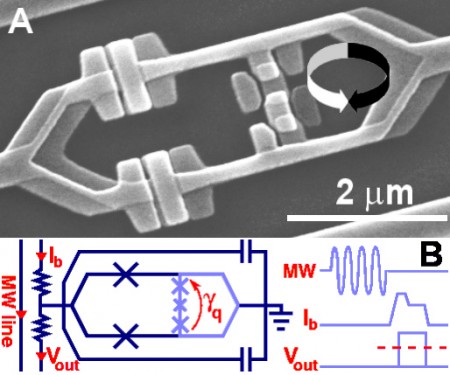Scientists are a step closer to creating a quantum computer
American scientists from the University of Pennsylvania managed to create a device with which you can hold hundreds of atoms, place them in a three-dimensional grid and work with each particle separately. According to the authors of the project, such a development brought scientists closer to creating a quantum computer.
Let me remind you that a quantum computer operates with the so-called quantum bits (qubits). A qubit is not just a logical zero or a logical one - it can take these two values simultaneously. Thus, with an increase in the number of used quantum bits, the number of simultaneously processed values increases exponentially. In particular, two qubits contain four possible values, three qubits - eight, and so on. The magnitude of the quantum bit is determined by the electron spin. Computers on a quantum principle in solving some problems have a huge advantage over classical ones.

However, in order to use qubits for calculations, scientists need to find a way to create a kind of array from particles. David Weiss, Carl Nelson and Xiao Li managed to do something similar. To capture particles, scientists used an optical lattice in which with the help of three lasers it was possible to “lock” 250 cesium atoms. It is worth noting that scientists have created one-dimensional and two-dimensional lattices containing millions of particles before, but they did not allow working individually with each atom, which is necessary for creating a quantum computer.
According to Weiss, in the course of further experiments, it is planned to affect each atom with a focused laser beam, which will allow changing the energy state of the particle and forcing it to interact with its neighbors. During such an impact, atoms must make a transition to a quantum state, known as entanglement, reports New Scientist. Taken with compulenta.ru .
Let me remind you that a quantum computer operates with the so-called quantum bits (qubits). A qubit is not just a logical zero or a logical one - it can take these two values simultaneously. Thus, with an increase in the number of used quantum bits, the number of simultaneously processed values increases exponentially. In particular, two qubits contain four possible values, three qubits - eight, and so on. The magnitude of the quantum bit is determined by the electron spin. Computers on a quantum principle in solving some problems have a huge advantage over classical ones.

However, in order to use qubits for calculations, scientists need to find a way to create a kind of array from particles. David Weiss, Carl Nelson and Xiao Li managed to do something similar. To capture particles, scientists used an optical lattice in which with the help of three lasers it was possible to “lock” 250 cesium atoms. It is worth noting that scientists have created one-dimensional and two-dimensional lattices containing millions of particles before, but they did not allow working individually with each atom, which is necessary for creating a quantum computer.
According to Weiss, in the course of further experiments, it is planned to affect each atom with a focused laser beam, which will allow changing the energy state of the particle and forcing it to interact with its neighbors. During such an impact, atoms must make a transition to a quantum state, known as entanglement, reports New Scientist. Taken with compulenta.ru .
')
Source: https://habr.com/ru/post/10988/
All Articles